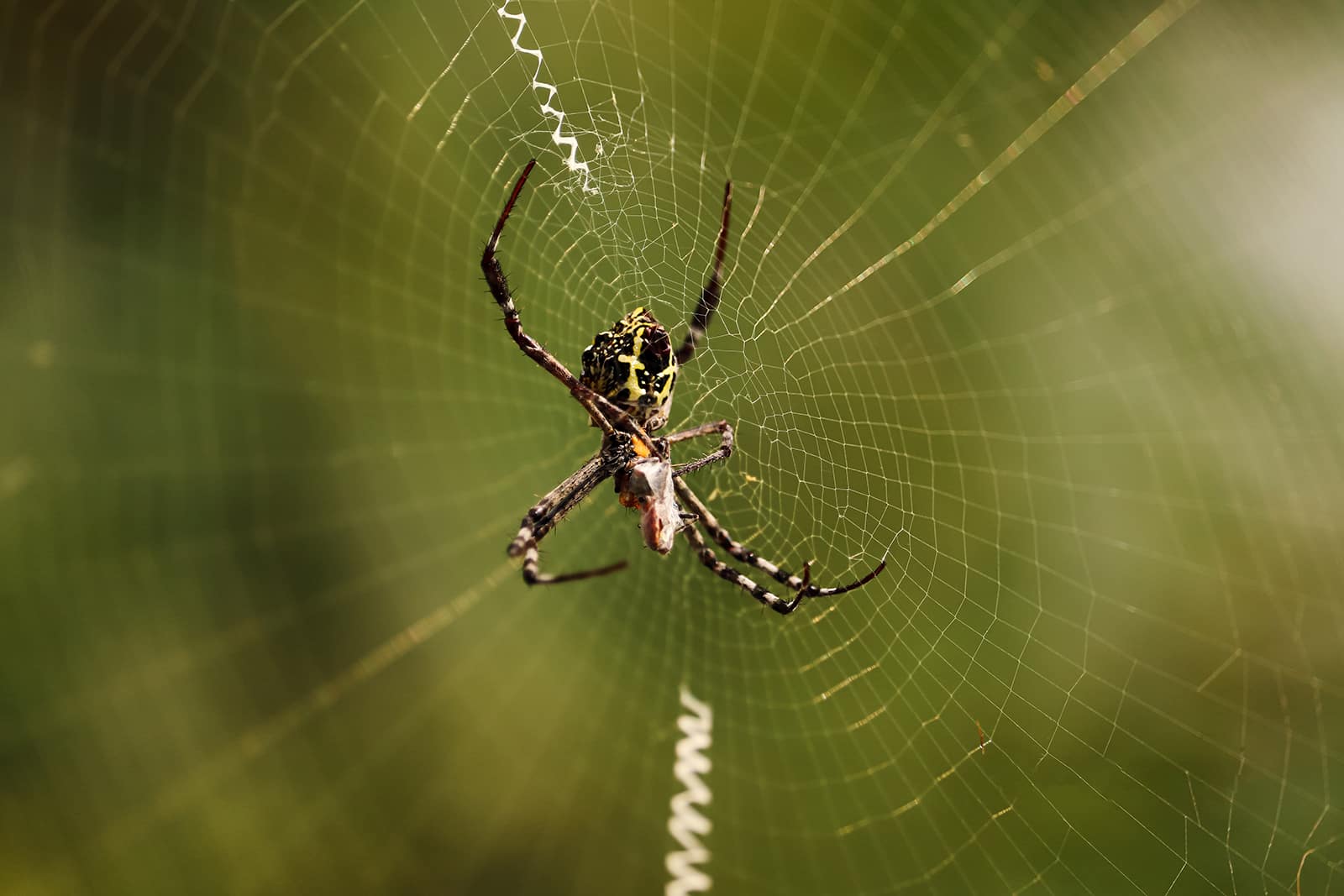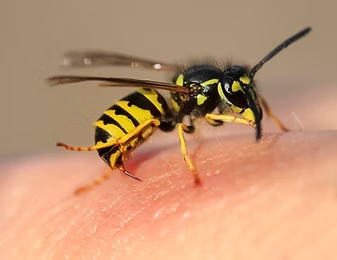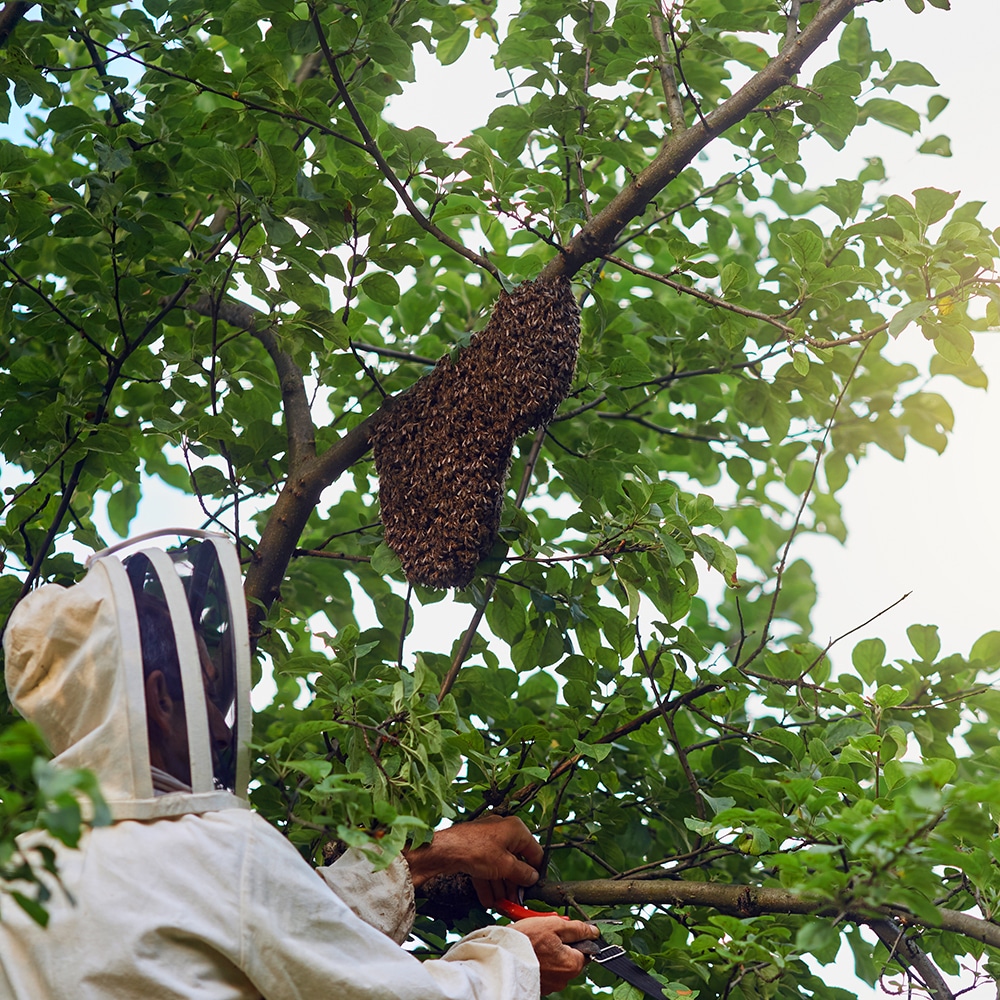
Why Do Spiders Come Back And Why
Why Do Spiders Come Back And Why On The Central Coast NSW. Responsive Proactive Solutions. Detail-focused for lasting results. Call Adam on 0431 222 894
Understanding the “Bites Stings and Human Health Implications” is crucial for everyone, especially in Central Coast NSW. From ants to bees, knowing what to do can save you time and worry. Vital Pest Control is here to help.
Symptoms of Bites from Ants or Fleas
Ant bites often sting and itch. Flea bites appear as red, itchy dots. Both can cause discomfort. Recognising these signs early helps in quick relief. Applying ice or creams soothes the skin.
Recognising Bed Bug Welts
Bed bug bites usually line up in rows. They can be itchy and inflamed. Identifying these welts early can prevent further issues. Wash the area and change bedding promptly for comfort.
Mosquito Borne Diseases Overview
Mosquitoes can spread diseases like Ross River virus. Understanding these risks is key. Use repellents and wear protective clothing to reduce exposure. Stay informed about local outbreaks.
Risks from Wasp or Bee Stings
Wasp or bee stings can lead to severe reactions. Swelling and pain are usual. Removing the sting quickly and applying ice can help. Watch for allergic reactions and seek medical help if needed.
Treating Infected Bite Wounds
Infected bites may swell and ooze. Cleaning the wound reduces infection risk. Use antiseptic and keep it covered. If it worsens, consult a healthcare professional for further advice.
When to Suspect Secondary Infection
Look for increased redness or pus. Fever might also appear. These signs indicate a secondary infection. Seek medical treatment to prevent complications. Early intervention is vital.
Possible Anaphylaxis Response
Anaphylaxis is a severe allergic reaction. Symptoms include difficulty breathing and swelling. Immediate medical attention is a must. Keep an EpiPen handy if you’re prone to allergies.
Keeping a First Aid Kit Handy
A first aid kit is essential for handling bites and stings. It should contain creams, bandages, and antiseptic wipes. Regularly check and replenish supplies. Vital Pest Control recommends having it ready for emergencies.
Discover how we can help you today! Visit our Contact page for more information.

Ant and flea bites are common nuisances in Central Coast NSW, impacting human health and comfort. Recognising the symptoms can help in managing the discomfort and preventing further complications. This guide will explore the symptoms associated with bites from these pests, helping residents identify and address them promptly.
Ant Bites Symptoms
Ant bites often lead to immediate pain and redness. The affected area may swell and itch intensely. Some individuals may experience a burning sensation, particularly from fire ants known for their aggressive nature. In severe cases, blisters can form, filled with a clear fluid. Allergic reactions, though rare, might cause difficulty breathing and require urgent medical attention.
Flea Bites Symptoms
Flea bites usually appear as small, red bumps, often in clusters or lines. They tend to be extremely itchy, causing discomfort and potentially leading to secondary infections from scratching. These bites are usually found around the ankles or legs but can occur anywhere on the body. Flea bites may also trigger allergic reactions, resulting in rashes or hives.
Understanding these symptoms helps in taking swift action, ensuring bites are treated effectively and reducing the risk of severe health implications. Residents of Central Coast NSW can rely in Vital Pest Control for professional advice and pest management solutions.
Understanding bed bug welts is crucial for identifying an infestation early. These tiny pests often go unnoticed until their bites cause skin reactions. Recognising these welts can help in seeking timely pest control solutions, particularly for those living on the Central Coast of NSW.
Identifying Bed Bug Welts
Bed bug welts typically appear as small, red bumps on the skin, often in clusters or lines. They are usually itchy and may swell, resembling mosquito bites. The bites often occur on exposed skin areas like the arms, legs, and neck. Noticing a pattern can signal a bed bug issue, urging a closer inspection of bedding and furniture.
Timing and Reaction
Bite reactions can vary from person to person. Some individuals might experience immediate welts, while others might not react at all. The welts can appear hours or even days after the bite, making it tricky to pinpoint the source. Recognising the timing of these welts can provide clues about when the pest was active.
Comparing with Other Insect Bites
Bed bug welts can sometimes be confused with bites from other insects. However, unlike flea bites, which are often around the ankles, bed bug welts appear in more random patterns. Recognising these differences is vital for addressing the correct pest problem, ensuring effective treatment and pest control on the Central Coast.
In the lush landscapes of the Central Coast NSW, mosquitoes are more than just an annoyance. These tiny pests are known carriers of various diseases that pose significant threats to human health. As a part of our commitment at Vital Pest Control to safeguard the community, understanding mosquito-borne diseases is crucial. This knowledge empowers residents to take informed actions against these pests.
Common Mosquito-Borne Diseases
Mosquitoes are notorious for spreading diseases like dengue fever, Ross River virus, and the Barmah Forest virus. These illnesses can cause severe symptoms, including high fevers, rashes, and joint pain. In some cases, complications may lead to prolonged illness, impacting daily life. Preventing mosquito bites is essential to reducing the risk of these diseases.
Impact in Public Health
The impact of mosquito-borne diseases on public health is significant. Outbreaks can strain healthcare systems and lead to increased medical costs for families. Public awareness campaigns and community involvement are vital to controlling mosquito populations. Vital Pest Control plays a key role in educating the community and implementing effective pest management strategies.
Prevention and Control Measures
Effective prevention starts with reducing mosquito breeding sites. Regularly emptying containers that collect water, maintaining clean gutters, and using insect repellents can help. Professional pest control services offer tailored solutions to manage mosquito populations effectively. At Vital Pest Control, we provide expert guidance and services to protect you and your family.
Wasp and bee stings pose significant risks, especially on the Central Coast NSW, where these insects thrive. For some, a sting may be a painful inconvenience, while for others, it can trigger severe allergic reactions. Understanding these risks is crucial for ensuring safety and effective pest control.
Allergic Reactions
One of the most serious risks from wasp or bee stings is an allergic reaction. Symptoms can range from mild swelling and redness to anaphylaxis, a life-threatening condition. Individuals with known allergies should carry an epinephrine auto-injector and seek immediate medical attention if stung.
Infection Risks
Stings can also lead to infections if not treated properly. Bacteria may enter the wound, causing redness, pus, or increased pain. It’s important to clean the sting site with soap and water and monitor for signs of infection, which may require medical treatment.
Localised Pain and Swelling
Even without an allergy, stings can cause significant discomfort. Pain, itching, and swelling are common. Applying ice to the affected area can help reduce these symptoms. Over-the-counter pain relief may also be beneficial in managing discomfort.
Understanding the potential risks from stings and knowing how to react can help mitigate health implications. Vital Pest Control on the Central Coast NSW offers professional services to manage wasp and bee populations, reducing the risk of stings and ensuring safer environments for everyone.
Infected bite wounds can pose significant health risks if not treated promptly. On the Central Coast of NSW, where pest activity is prevalent, understanding how to manage these wounds is crucial. Effective treatment not only alleviates immediate discomfort but also prevents further complications.
Recognising Signs of Infection
Identifying infection early is key to successful treatment. Look for redness spreading from the bite area, swelling, warmth, or pus discharge. Increased pain or tenderness can also indicate infection. If such symptoms appear, it’s vital to act quickly to prevent the spread.
Immediate First Aid Steps
Start by cleaning the wound with soap and water. Gently rinse under running water to remove dirt or debris. Avoid scrubbing, as this can irritate the wound. Applying an antiseptic can help minimise bacteria. Cover the bite with a sterile bandage to protect it from further exposure.
Seeking Professional Medical Advice
If symptoms persist or worsen, consult a medical professional. They might prescribe antibiotics to combat the infection. Timely intervention ensures that the infection does not progress to more severe conditions, such as cellulitis.
Preventive Measures
Prevention is always better than cure. Use insect repellent and wear protective clothing when outdoors. Regularly check your surroundings for pest infestations and contact Vital Pest Control on the Central Coast NSW for reliable pest management solutions.
Recognising secondary infections from bites and stings is vital for effective pest control management, especially on the Central Coast of NSW. Pest-related health issues can escalate rapidly if not addressed. Understanding when to suspect a secondary infection helps in seeking timely medical assistance.
Signs of Secondary Infection
When a bite or sting site becomes redder, more swollen, or increasingly painful, suspect a secondary infection. These changes often indicate that bacteria have invaded the area, worsening the initial bite. Look for unusual warmth around the site or the presence of pus, which is a strong indicator of infection.
Systemic Symptoms
Beyond local symptoms, systemic signs warrant concern. If you experience fever, chills, or feel generally unwell following a bite or sting, this might suggest an infection has spread. These symptoms are your body’s way of signalling that it needs help to fight off an invader.
Delayed Healing
If a bite or sting doesn’t heal within a reasonable timeframe, consider a secondary infection. Normally, minor bites should improve in a few days. Persistent issues could mean an infection is hindering recovery. Proper pest control can reduce these risks, preventing infections from escalating.
Anaphylaxis, a severe allergic reaction, can occur unexpectedly following bites or stings from pests. On the Central Coast NSW, it’s crucial to understand how to respond to such emergencies effectively. Vital Pest Control provides insights into handling these potentially life-threatening situations.
Recognising Anaphylaxis Symptoms
Identifying anaphylaxis swiftly is vital for a quick response. Symptoms may include difficulty breathing, swelling of the face or throat, rapid heartbeat, or a sudden drop in blood pressure. Recognising these signs early can make a significant difference in the outcome.
Immediate Actions to Take
Once anaphylaxis is suspected, immediate action is essential. Calling emergency services should be the first step. Administering adrenaline via an auto-injector, if available, is critical. Keeping the affected person calm and in a comfortable position while waiting for professional help can also aid in managing the situation.
Long-Term Prevention Strategies
Preventing future anaphylactic reactions involves understanding triggers and taking precautions. Consultation with healthcare professionals for allergy testing and obtaining an action plan can be beneficial. Regular pest control measures on the Central Coast NSW can reduce the risk of bites and stings, providing a safer environment.
On the Central Coast of NSW, nature is teeming with life, including pests that can bite or sting. It’s vital to keep a first aid kit handy to tackle unexpected encounters. A well-prepared kit can make a significant difference in handling these situations swiftly and effectively.
Essential Items for Quick Response
Your first aid kit should include items like antiseptic wipes and creams to clean bites promptly. Bandages and dressings are crucial for covering wounds, preventing infections. Instant cold packs can help reduce swelling and pain from stings. Keeping these essentials ensures you’re ready for any pest-related injury.
Inclusion of Specific Allergy Treatments
Many people on the Central Coast might experience allergic reactions to bites or stings. Including antihistamines and, if necessary, an EpiPen can provide immediate relief. It’s better to have these treatments on hand, especially in remote areas where help might take time to arrive.
Regular Maintenance and Restocking
Check your first aid kit regularly to ensure nothing is expired and all items are fully stocked. Replace used supplies after any incident. A well-maintained kit is essential for effective pest control, ensuring peace of mind when enjoying the outdoors.
Engaging with a healthcare provider after experiencing bites or stings is crucial, especially when living in areas like the Central Coast NSW, where pests can impact health. Vital Pest Control emphasises the importance of recognising symptoms and seeking professional advice to ensure safety and well-being.
Recognising Symptoms
Understanding the symptoms of pest bites or stings helps in taking swift action. Redness, swelling, or unusual pain could indicate a more serious reaction. Identifying these early signs allows for timely intervention and prevents complications. Healthcare providers can offer insights into whether symptoms need immediate attention or simple home care.
Understanding Risks
Pests on the Central Coast can pose varied health risks, from minor irritations to allergic reactions. A healthcare provider can assess personal risk levels and suggest preventive measures. Knowing the specific dangers associated with different pests ensures individuals are better prepared to handle any encounters, reducing anxiety and promoting peace of mind.
Personalised Health Advice
Consulting a healthcare provider offers tailored advice based on individual health conditions and history. They can recommend treatments like antihistamines or prescribe medications if needed. This personalised approach ensures that any health concerns are addressed efficiently, supporting long-term health and safety.
Managing scarring or itching from bites and stings is crucial for maintaining skin health, particularly in areas like the Central Coast NSW where insects are abundant. Effective management not only soothes discomfort but also reduces the risk of infections and long-term skin damage.
Immediate Care Tips
When bitten or stung, promptly wash the affected area with soap and water. This action removes irritants and reduces the chance of infection. Applying a cold compress can help decrease swelling and numb the itch. It’s vital to resist the urge to scratch, as it can lead to further irritation or scarring.
Utilising Over-the-Counter Solutions
Over-the-counter creams or ointments, such as hydrocortisone or calamine lotion, provide relief from itching and reduce inflammation. Antihistamines can also be effective in managing allergic reactions, minimising itching, and preventing excessive scratching.
Natural Remedies for Skin Relief
Natural remedies like aloe vera gel or tea tree oil soothe bites and stings while promoting healing. These options are particularly appealing for those who prefer chemical-free treatments. Applying these remedies gently to the skin can help with both itching and the prevention of scars.
Seeking Professional Advice
If symptoms persist despite home treatment, consult a healthcare professional. Persistent itching or scarring may require prescription medication or specialised care. Professional advice ensures a tailored approach to effectively manage skin health after bites or stings.
On the Central Coast of NSW, recognising venomous species is crucial for effective pest control and safeguarding human health. With an array of wildlife in the region, understanding which species pose a threat helps in taking the right precautions.
Common Venomous Spiders
The Central Coast is home to several venomous spiders, including the infamous funnel-web and redback spiders. Funnel-webs, often found in moist, sheltered places like gardens, have a dangerous bite. Redbacks prefer dry, warm areas like sheds and outdoor furniture. Recognising these spiders by their distinct appearance and habits can prevent harmful encounters.
Identifying Venomous Snakes
Snakes such as the eastern brown and red-bellied black snake are prevalent in the Central Coast. The eastern brown, with its slender build and brown colour, is highly venomous. Red-bellied black snakes, identifiable by their glossy black body and red belly, are also dangerous but less aggressive. Awareness of snake behaviour and appearance aids in avoiding bites.
Dealing with Venomous Marine Life
The region’s waterways host venomous marine species like the blue-ringed octopus and certain jellyfish. The blue-ringed octopus, small but deadly, displays vibrant blue rings when threatened. Jellyfish like the box jellyfish have long, venomous tentacles. Recognising these creatures during beach outings is vital for safety.
Fear and phobias of pests can significantly impact daily life, especially on the Central Coast of NSW. Understanding these anxieties is crucial for effective pest management. Vital Pest Control prioritises addressing these fears to create a safer environment.
Understanding Common Phobias
Many people experience intense fear when encountering pests like spiders, cockroaches, or rodents. These phobias often stem from personal experiences or cultural influences. Recognising these fears as real and valid is vital in providing supportive pest control solutions that ease client concerns.
Psychological Impact of Pest Phobias
Pest phobias can lead to stress and anxiety, affecting mental health. Individuals might avoid certain areas or activities due to fear, disrupting daily routines. Addressing these fears with empathy and understanding can alleviate stress and promote well-being, making homes more comfortable.
Strategies to Overcome Fear
Education plays a key role in reducing fear. Providing information about pest behaviour and control methods helps demystify these creatures. Vital Pest Control offers tailored solutions and preventive measures, empowering clients to manage their environment confidently. Professional support ensures a pest-free space, reducing fear and enhancing peace of mind.
Cross contamination is a critical concern in pest control, especially on the Central Coast of NSW. Understanding how pests contribute to this issue can help protect human health from bites, stings, and related complications. Pests like rodents, cockroaches, and ants are common culprits, spreading bacteria and allergens that compromise indoor spaces. Recognising the pathways of cross contamination is essential for effective pest management and safeguarding human health.
The Role of Pests in Cross Contamination
Pests often carry pathogens on their bodies, contaminating surfaces and food as they move. Rodents can spread salmonella and hantavirus, while cockroaches might introduce E. coli and other harmful bacteria. These contaminants can easily transfer from unclean surfaces to food preparation areas, increasing the risk of infections and allergic reactions. Identifying pest hotspots and understanding their habits are vital steps in preventing cross contamination.
Preventative Measures in Pest Control
Preventing cross contamination requires a proactive approach in pest control strategies. Regular inspections and maintenance reduce pest presence, while sealing entry points and maintaining cleanliness diminish their access to homes. Using proper storage techniques for food and waste minimises attractants. For a comprehensive defence, professional pest control services offer tailored solutions, ensuring effective long-term prevention and maintaining a healthier environment.
On the Central Coast NSW, dealing with pest-related bites can have serious health implications. For those affected by severe bites, understanding medical disclaimers is crucial. Vital Pest Control provides insights to ensure residents stay informed and safe.
Understanding Medical Advice
Medical disclaimers play a critical role in advising individuals on the appropriate actions following a severe bite. These disclaimers remind individuals that while initial steps can be taken, professional medical advice is essential. They stress the importance of seeking immediate medical attention to prevent complications like infections or allergic reactions.
Limitations of Information
Vital Pest Control’s content provides valuable information, yet it is not a substitute for professional medical consultation. Disclaimers highlight the limitations of online resources, urging individuals to consult healthcare professionals for a comprehensive evaluation. This ensures that treatment aligns with individual health needs.
Liability and Safety
Disclaimers also address liability, clarifying that the information provided is educational. They urge users to exercise caution and not rely solely on general advice for severe cases. This approach fosters a safety-first mindset, encouraging individuals to prioritise their health and well-being through professional guidance.
Vital Pest Control on the Central Coast NSW plays a crucial role in safeguarding human health by preventing bites and stings from various pests. Effective prevention strategies can significantly minimise risks associated with pest-related health issues. Implementing these steps can protect your home and family from potential dangers.
Regular Property Inspections
Conducting regular inspections of your property is essential for detecting potential pest problems early. Look for signs like droppings, nests, or damaged wood. Catching these indicators early allows for timely intervention, reducing the risk of infestations.
Seal Entry Points
Ensuring that all entry points in your home are sealed is a straightforward yet effective measure. Check windows, doors, and cracks in walls or foundations. By closing these gaps, you prevent pests from entering your living spaces, thus reducing the likelihood of bites and stings.
Maintain Cleanliness
Maintaining a clean environment is a proactive way to deter pests. Regularly remove food scraps and store food in airtight containers to avoid attracting insects and rodents. A clean home is less inviting to pests, keeping your family safer from potential health risks.
Use Natural Repellents
Natural repellents offer a safe way to keep pests at bay without harsh chemicals. Essential oils like peppermint and eucalyptus can be effective deterrents. Applying these regularly in problem areas can help maintain a pest-free home.
Please leave your details in the form and we will call you back the same day.
So that we can process your enquire efficiently please leave as many details as possible and upload any relevant images. (.jpg and .png format)

Why Do Spiders Come Back And Why On The Central Coast NSW. Responsive Proactive Solutions. Detail-focused for lasting results. Call Adam on 0431 222 894

Building a Long Term Residential Pest Protection Plan For Home Owners On The Central Coast NSW. Responsive Proactive Solutions. Detail-focused for lasting results. Call Adam on 0431 222 894

How to Protect Your Home from Wasp Infestations On The Central Coast NSW. Responsive Proactive Solutions. Detail-focused for lasting results. Call Adam on 0431 222 894